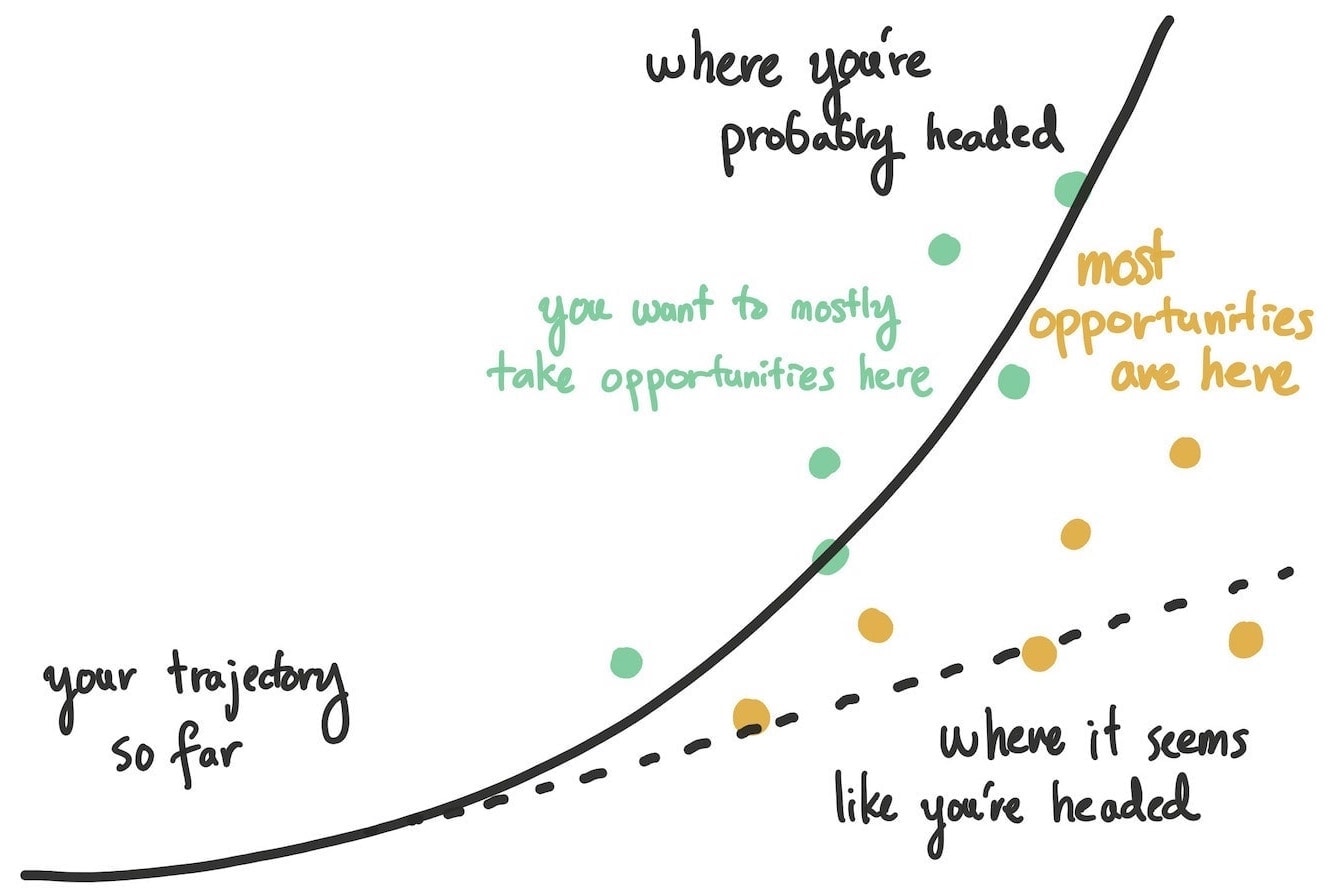Since the start of the year, I’ve spent a lot of time speaking with friends and people I meet online about a common, difficult decision: in an ocean of interesting opportunities, how do I pick the few, right things that’ll take me the furthest? The good old “what do I commit to?” problem.
Some of these people are choosing whether to start their career at an established company or join an earlier-stage startup. Some people are wondering whether they should accept a generous job offer or continue looking for better opportunities. In these conversations and in my own experience, there are a few perspectives I’ve learned that seem to resonate with people.
If you’re any good at what you do, the opportunities you have around you are going to improve exponentially over time. There are a few feedback loops involved that make this so. If you’re good at what you do, there will always be people looking for people like you. Your network is going to grow, and as you get better opportunities and improve at your craft, your skill is going to grow, too. These all loop back on each other: being more practiced at your work attracts more people around you, and more people increases your chances of stumbling into the next great opportunity, where you’ll grow faster. In the end, you’re going to find yourself on a curve that bends upwards.
At any given moment in time, though, you won’t see the long arc that bends upwards in front of you or behind you. You’ll see a little tiny sliver of that curve that you sit on in that moment, and that small slice will feel relatively flat. So to predict what kinds of things you’ll do in the future, you’ll project that path forwards in time to months and years ahead in a straight line, not an upwards curve. Often people make commitment decisions based on whether the opportunities are better than where they expect to be in the future. And if they make the mistake of extrapolating their path linearly into the future, they’re always going to be faced with too many good opportunities.
One common approach against this problem is to jump around frequently. Do something for a short while, but be ready to jump ship when the next great opportunity comes along. Being flexible like this is a good way to remain open to options and get a wide breadth of experience, but it critically locks you out of the kind of long-term, compounding growth in experience, in skill, and in network that only comes when you can focus on a project or problem for years at a time. This is the paradox of choice: picking a pretty-good option and sticking with it long enough for the benefits to compound over time is better than picking the best option, if it means jumping around all the time.
So what’s the solution?

If you simply find good opportunities by projecting your current path forwards in time, most of the opportunities in front of you are going to seem great. But chances are, you’re not going to end up where you project. Most good people tend to underestimate their potential because they intuitively project their path forwards linearly, and if you follow an exponential curve upwards, you’re going to end up somewhere far above most of the options you’re presented with at any given moment.
The solution, then, is not to settle for opportunities that seem great, but wait for the ones that seem like true outliers – the once-in-five-year opportunities that are far above your obvious, linear path forward, but are probably on your exponential curve upwards into the future.
The catch about these outlier opportunities is that they are much harder to get than the ones on your linear path, and they’re much rarer. Despite this, in my experience, it’s worth the effort to be both patient and selective enough to commit deeply to these few right opportunities. In time, these experiences will be the ones that you’ll be able to stick with for many years to grow and change for the long term.
← Capabilities × motivation × access
Habitcrafting and tool-making →
I share new posts on my newsletter. If you liked this one, you should consider joining the list.
Have a comment or response? You can email me.